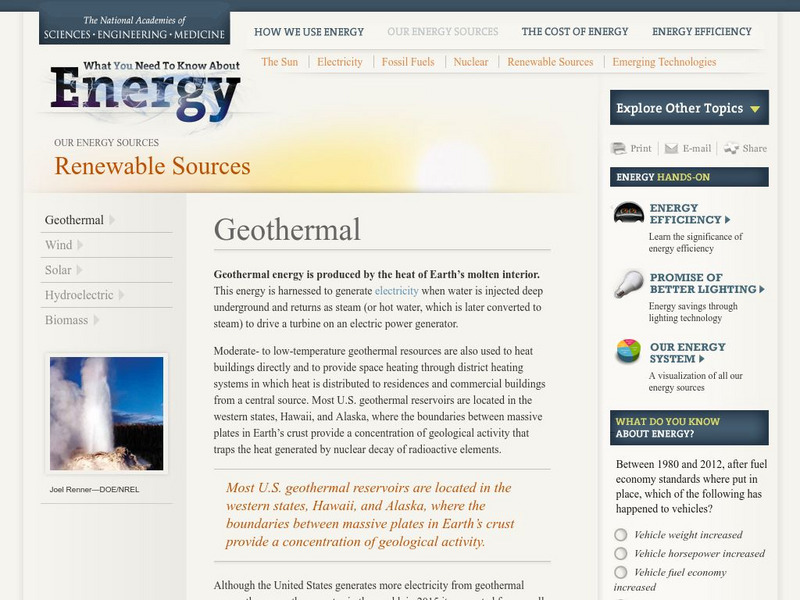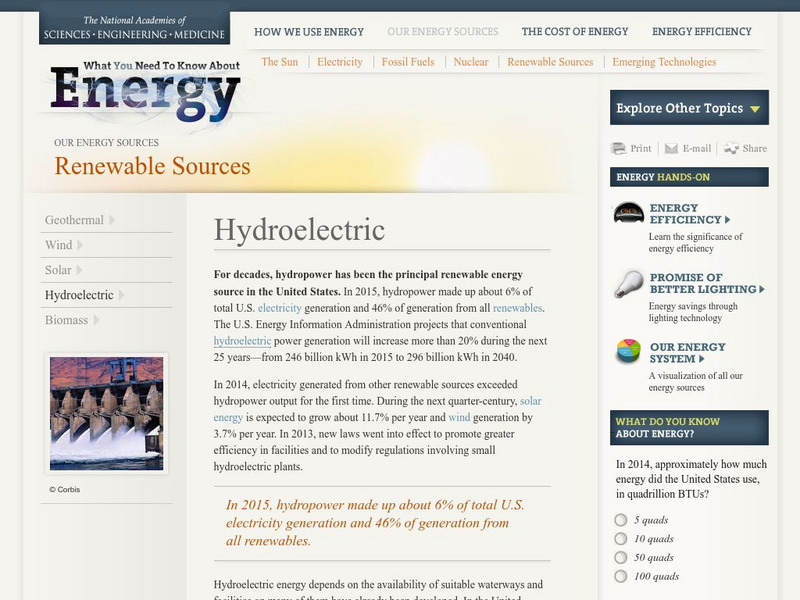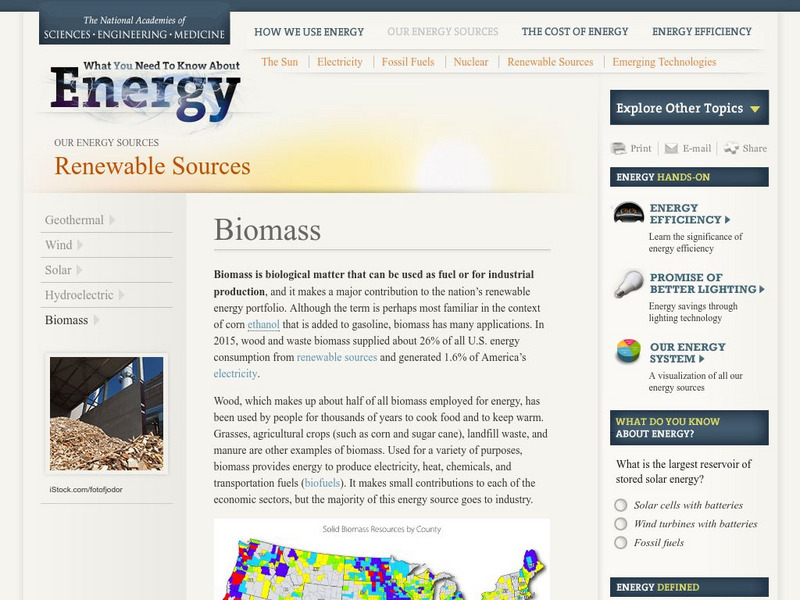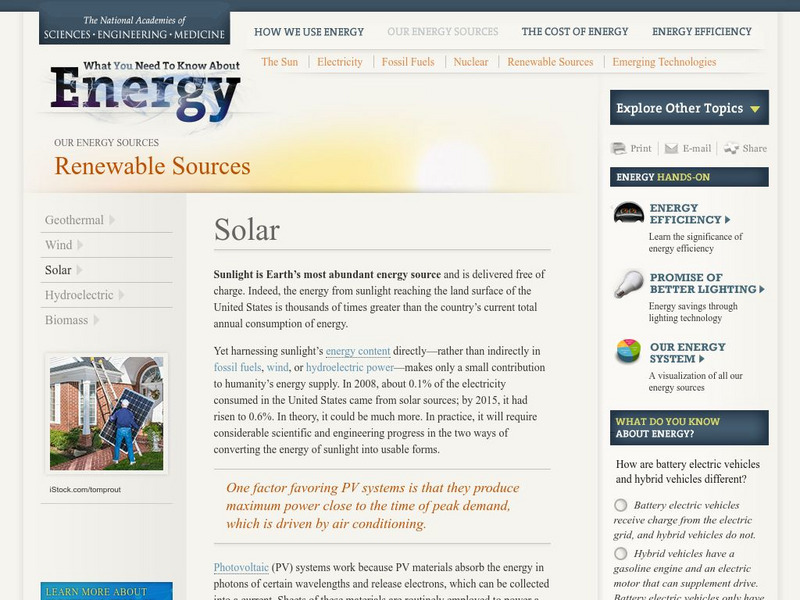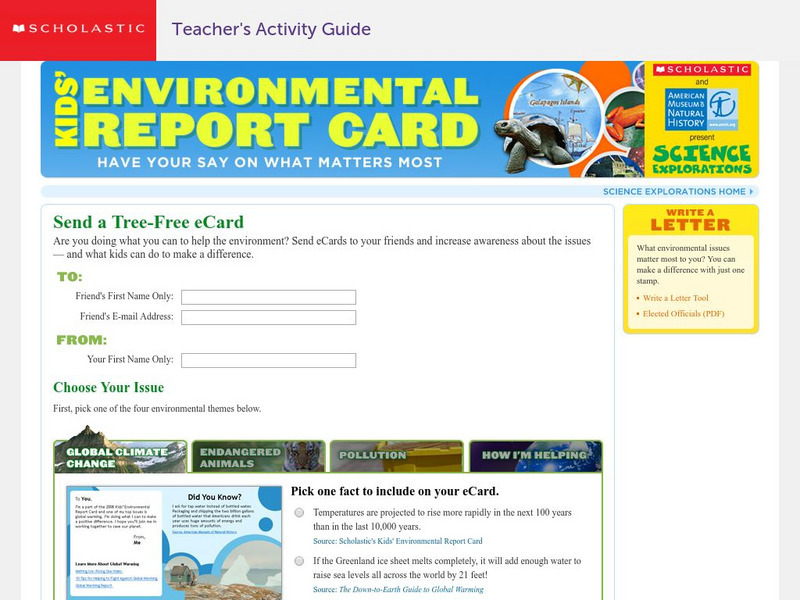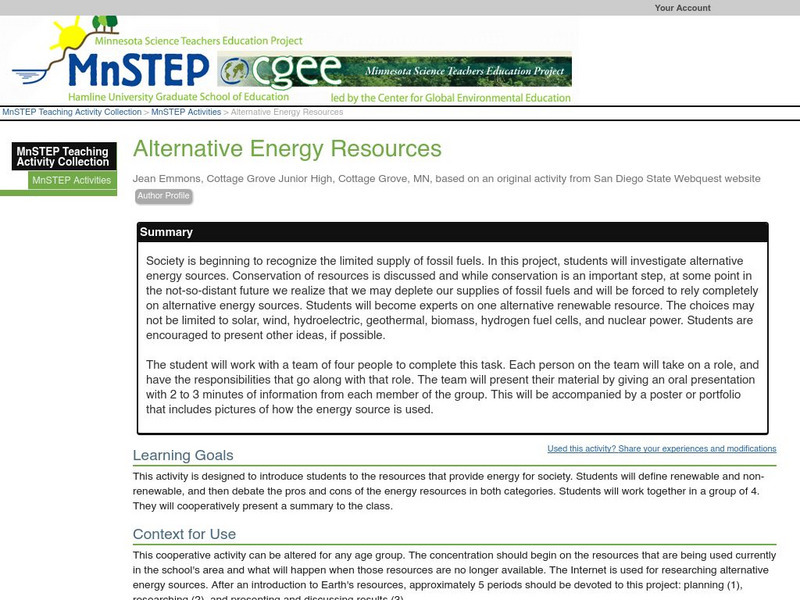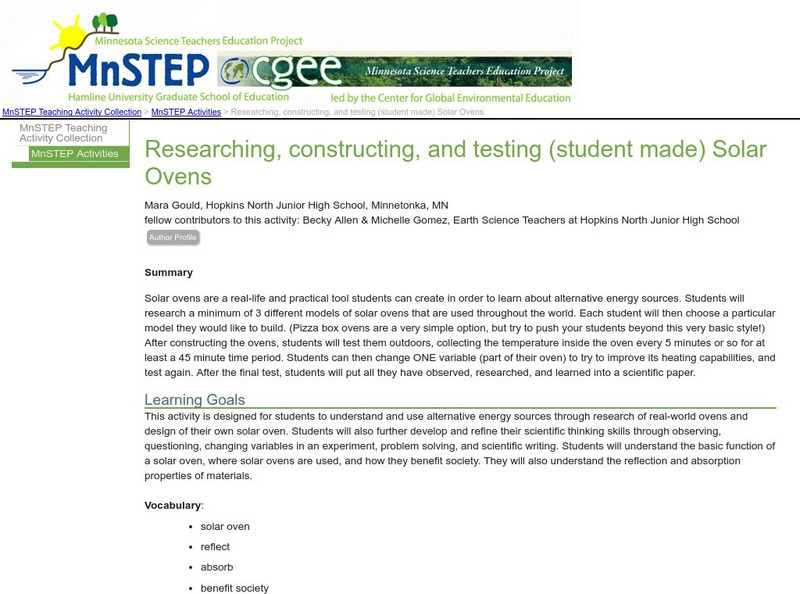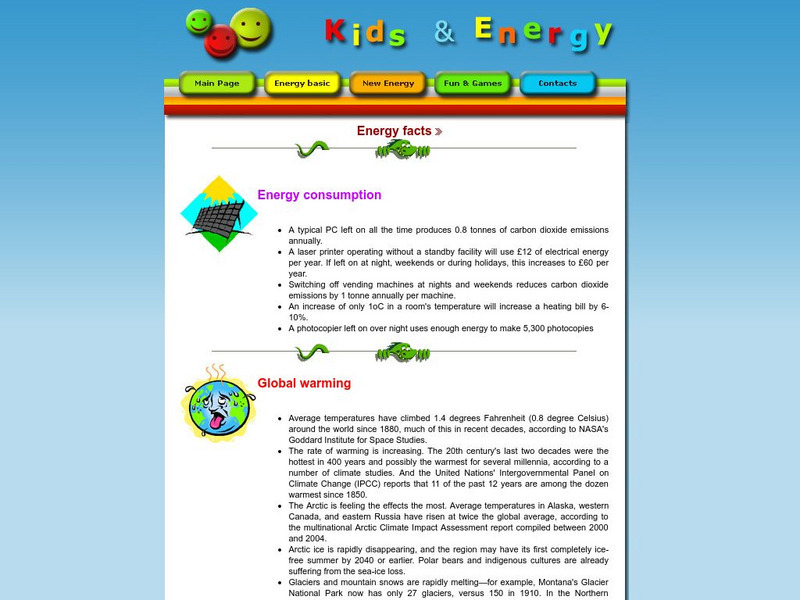US Department of Energy
U.s. Department of Energy: Energy Savers: Small Wind Electric Systems
An interactive animation teaching how a wind turbine works to produce electricity.
State Energy Conservation Office-Texas
State Energy Conservation Office: Rural Renewable Applications [Pdf]
Looks at ways that renewable energy resources and systems have been used in the past, and continue to be developed today, in agriculture and on agricultural land.
State Energy Conservation Office-Texas
State Energy Conservation Office: Renewable Energy Guide for Buildings [Pdf]
A basic guide for ways to be more energy-efficient and to use more renewable energy sources in a building. These include methods of reducing heat or cool air loss, ways of harnessing solar energy, and using the wind for ventilation.
State Energy Conservation Office-Texas
State Energy Conservation Office: Solar and Electric Cars [Pdf]
Learn the differences between cars powered by different fuels. Looks at solar, electric, hybrid and gasoline-powered cars.
State Energy Conservation Office-Texas
State Energy Conservation Office: Electricity From the Sun [Pdf]
Discusses forms of renewable energy that rely on the sun. For example, wind is created when solar energy heats the air, and biomass is solar energy that has been stored in plants.
State Energy Conservation Office-Texas
State Energy Conservation Office: Renewable Energy for the Home [Pdf]
Discusses different ways to heat and cool a home, and perform a variety of tasks, using renewable energy sources. Examples include window shades, a solar water heater, solar-powered toys, etc.
State Energy Conservation Office-Texas
State Energy Conservation Office: Energy Sources: Fuels From Biomass: Biodiesel
Discusses biodiesel fuel production and the benefits that this renewable energy resource has for the environment and the economy.
National Academies of Sciences, Engineering, and Medicine
The National Academies: Renewable Sources: Geothermal
Geothermal energy is being used today on a small scale but is an appealing alternative to other sources of energy as it has little impact on the environment. This source of energy and how we are harnessing it are described here.
National Academies of Sciences, Engineering, and Medicine
The National Academies: Renewable Sources: Hydroelectric
Hydroelectric power has been a major source of energy production in the United States. More recently, other alternative energy sources have taken some of its market share. Hydroelectricity has both advantages and disadvantages, briefly...
National Academies of Sciences, Engineering, and Medicine
The National Academies: Renewable Sources: Biomass
The pros and cons of harnessing energy from biomass are outlined. Biomass refers to biological materials that are used to produce energy. Wood and manure are examples of biomass.
National Academies of Sciences, Engineering, and Medicine
The National Academies: Renewable Sources: Wind
The status of wind energy production in the United States is described, with the advantages and disadvantages of this alternative energy source.
National Academies of Sciences, Engineering, and Medicine
The National Academies: Emerging Technologies: Hydrogen Fuel Cells
The advantages and disadvantages of hydrogen fuel cell technology as a source for energy production are outlined. There is still much to be done in research and development before this energy source can be marketed widely.
National Academies of Sciences, Engineering, and Medicine
The National Academies: Emerging Technologies: Biofuels
Biofuels are made from organic materials such as corn and algae, as well as sugars and starches from plant cellulose. They have advantages such as sustainability and lowered greenhouse gas production, but they can impact on the...
National Academies of Sciences, Engineering, and Medicine
The National Academies: Our Energy Sources: Nuclear Energy
Nuclear fission energy accounts for a large portion of energy production worldwide. New plants will use improved technologies. There is also research underway to explore how to harness the energy produced from nuclear fusion, but this...
National Academies of Sciences, Engineering, and Medicine
The National Academies: Renewable Sources: Solar
Solar energy is an appealing alternative to conventional sources of energy because it produces no greenhouse gases. An overview of its advantages and disadvantages is presented here.
Scholastic
Scholastic: Science Explorations: Kids' Environment Report Card
Cast your vote on the important environmental issues. Associated with each issue, there are at least three links to sites which can further your understanding of the issue. To encourage others to respect the environment, you can also...
Science Education Resource Center at Carleton College
Serc: Alternative Energy Resources
Society is beginning to recognize the limited supply of fossil fuels. In this project, students will investigate alternative energy sources. Conservation of resources is discussed and while conservation is an important step, at some...
Science Education Resource Center at Carleton College
Serc: Alternative Energy Debate
With a learning team, students choose an alternative energy source such as solar, wind, biofuel, geothermal or other form and research the pros and cons of that energy type. The team then splits into debate teams and draws straws to...
Science Education Resource Center at Carleton College
Serc: Mn Step: Researching, Constructing, and Testing (Student Made) Solar Ovens
For this science investigation, middle schoolers will research models of solar ovens, choose one design, and create it. Once built, they will test it outside and record the internal temperature at intervals. Next, they are to change on...
Science Education Resource Center at Carleton College
Serc: Power Generation Town Council
Students will work together to implement decision-making processes used by governmental agencies to select a power generation system for a small town. This will enable students to develop critical thinking and questioning skills while...
Science Education Resource Center at Carleton College
Serc: Learning Sustainability With Sim City
Helps educators develop SimCity-based lesson plans that will encourage students to think critically about the challenges facing modern cities. SimCity is a city-building simulation computer game where players become the mayor and design...
Wikimedia
Wikipedia: Biomass
Learn about "biomass," organic non-fossil material of biological origin. Includes external links.
Cynthia J. O'Hora
Mrs. O's House: Clean Coal Technology
There is a debate on the table discussing whether clean coal is a viable source of energy or not. Understand the opposing views and decide what side of the table you fall on. Extension resources and activities are provided.
Energy for Sustainable Development
Esd Bulgaria: Kids & Energy: Energy Facts
A collection of facts about energy use broken down into various topic areas, e.g., health impact of fossil fuels, transportation, energy consumption, alternative energies, etc.


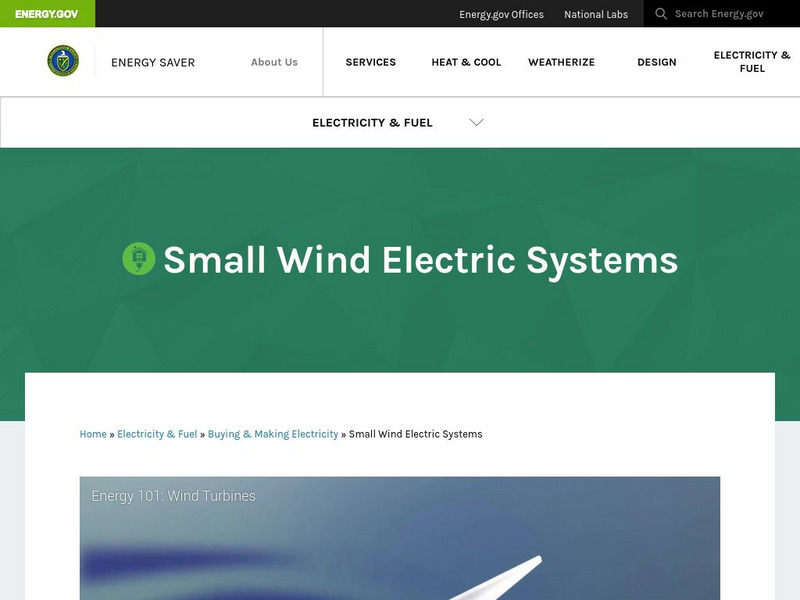
![State Energy Conservation Office: Rural Renewable Applications [Pdf] Handout State Energy Conservation Office: Rural Renewable Applications [Pdf] Handout](https://d15y2dacu3jp90.cloudfront.net/images/attachment_defaults/resource/large/FPO-knovation.png)
